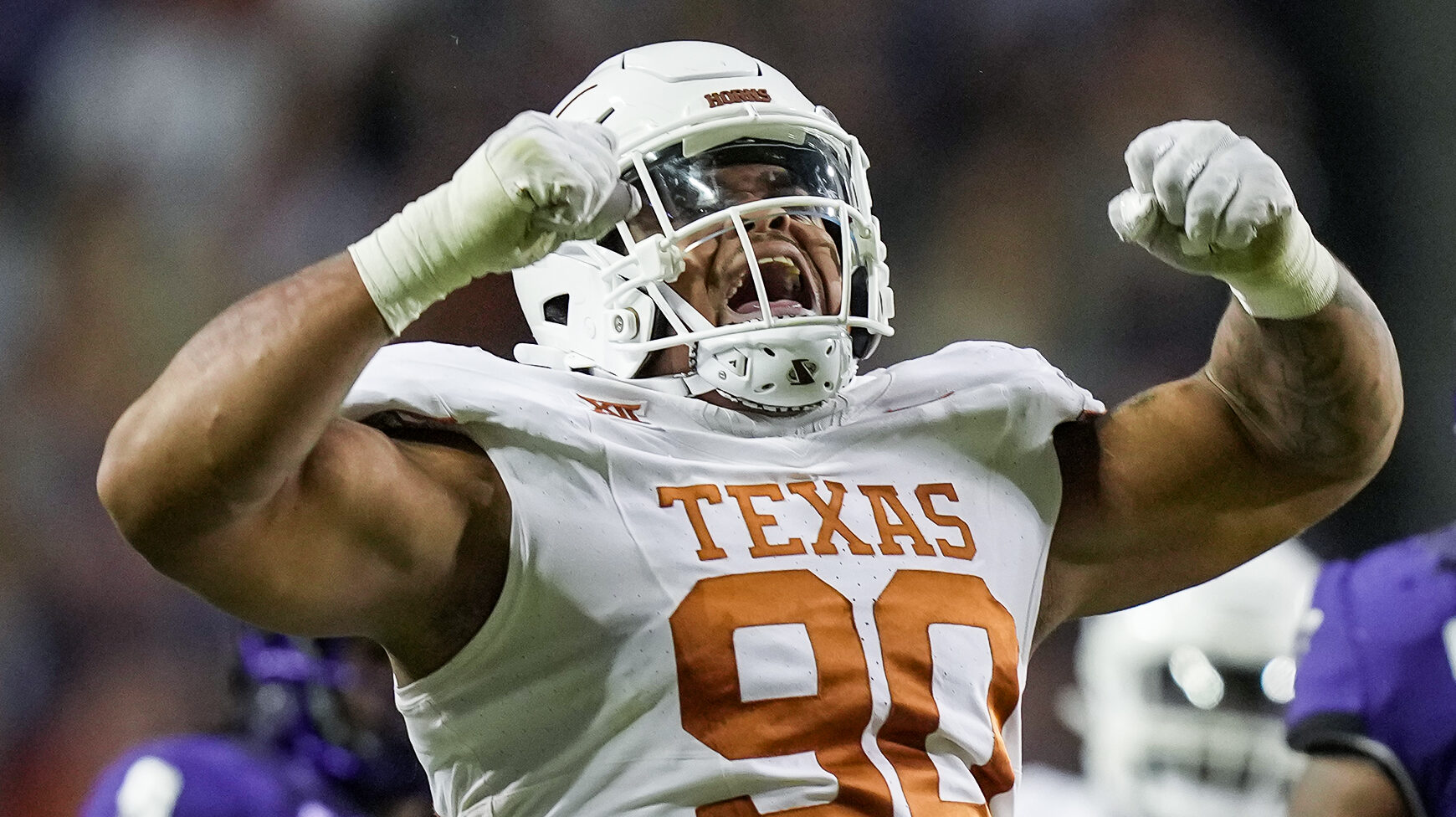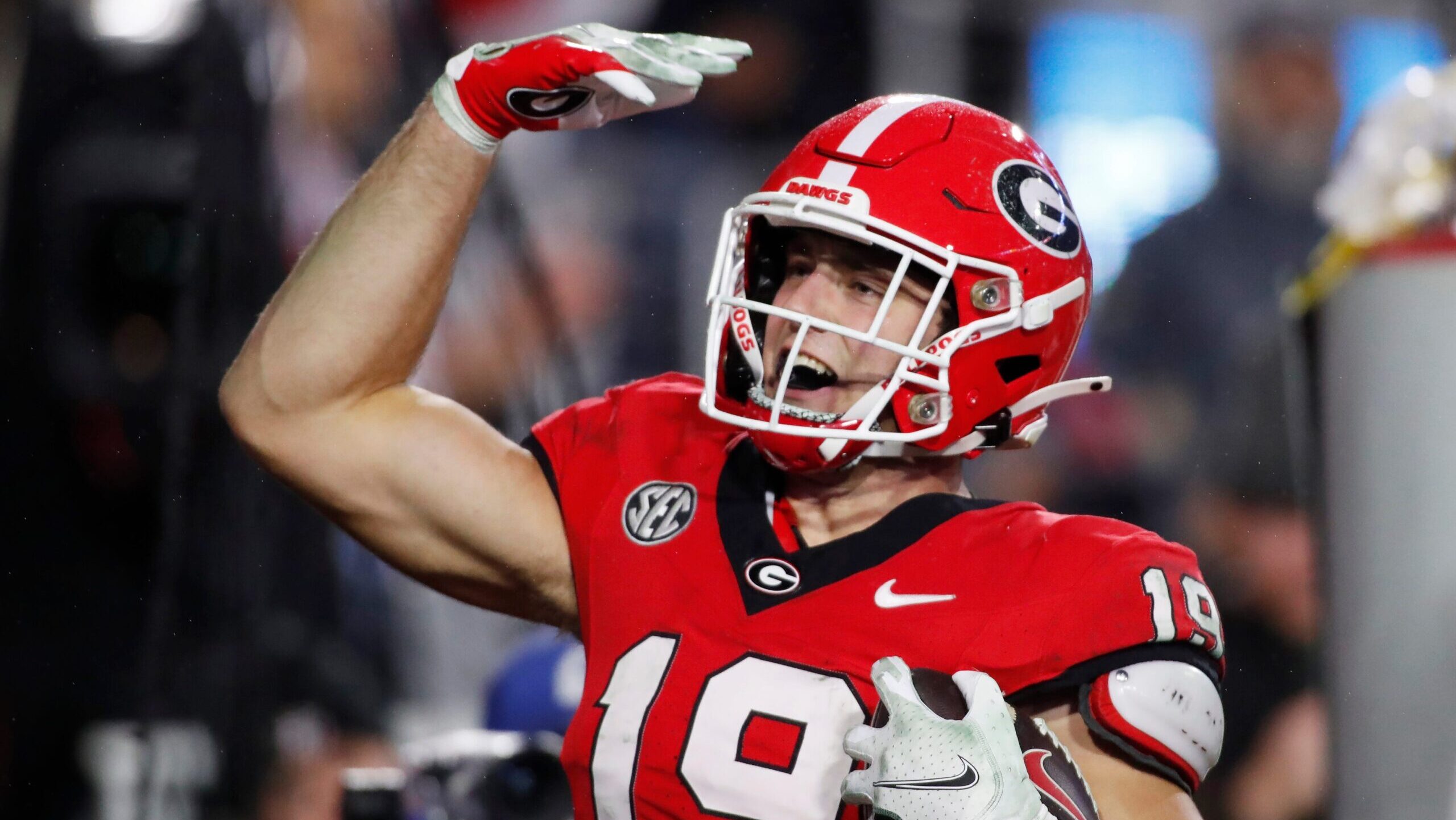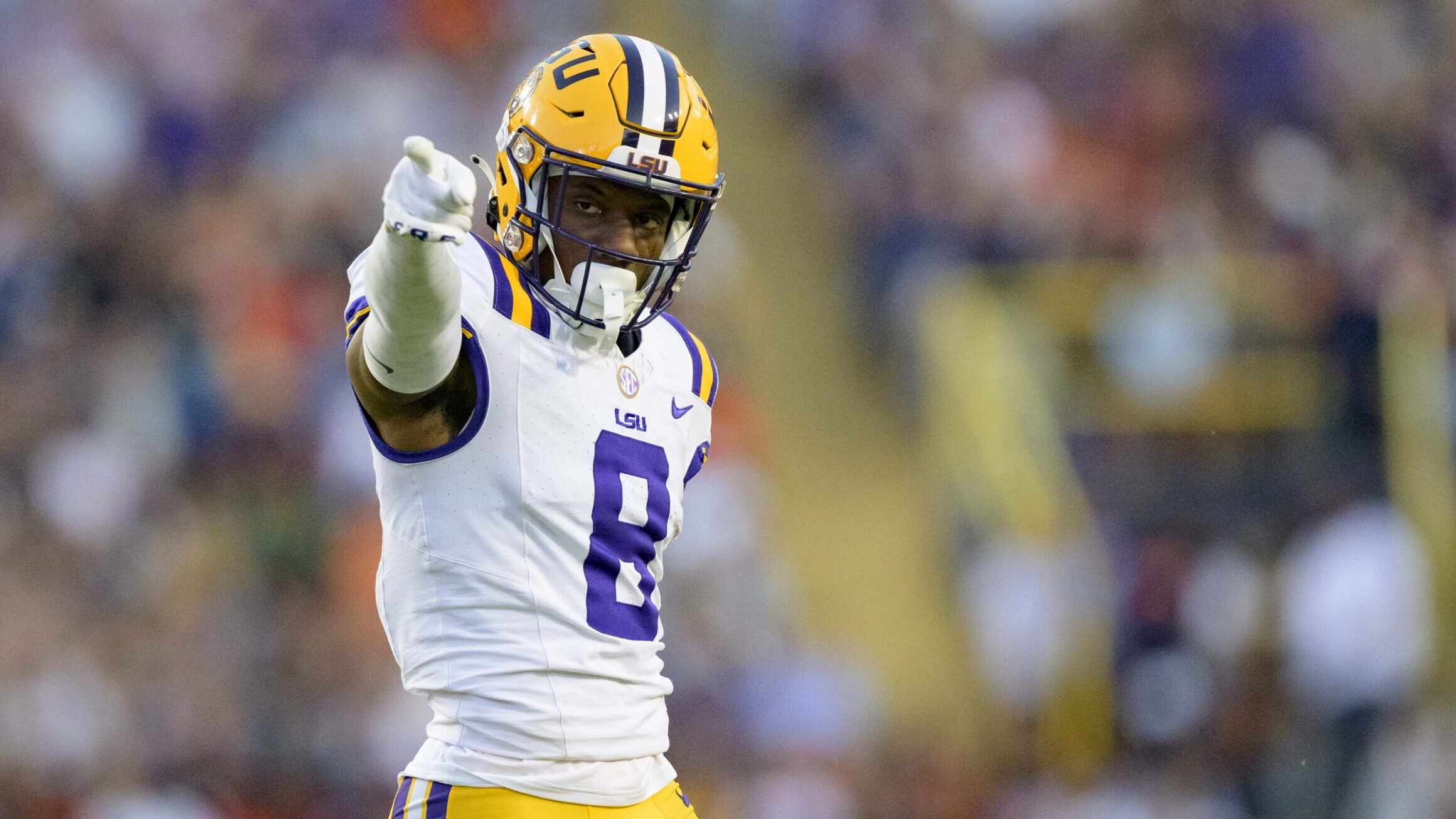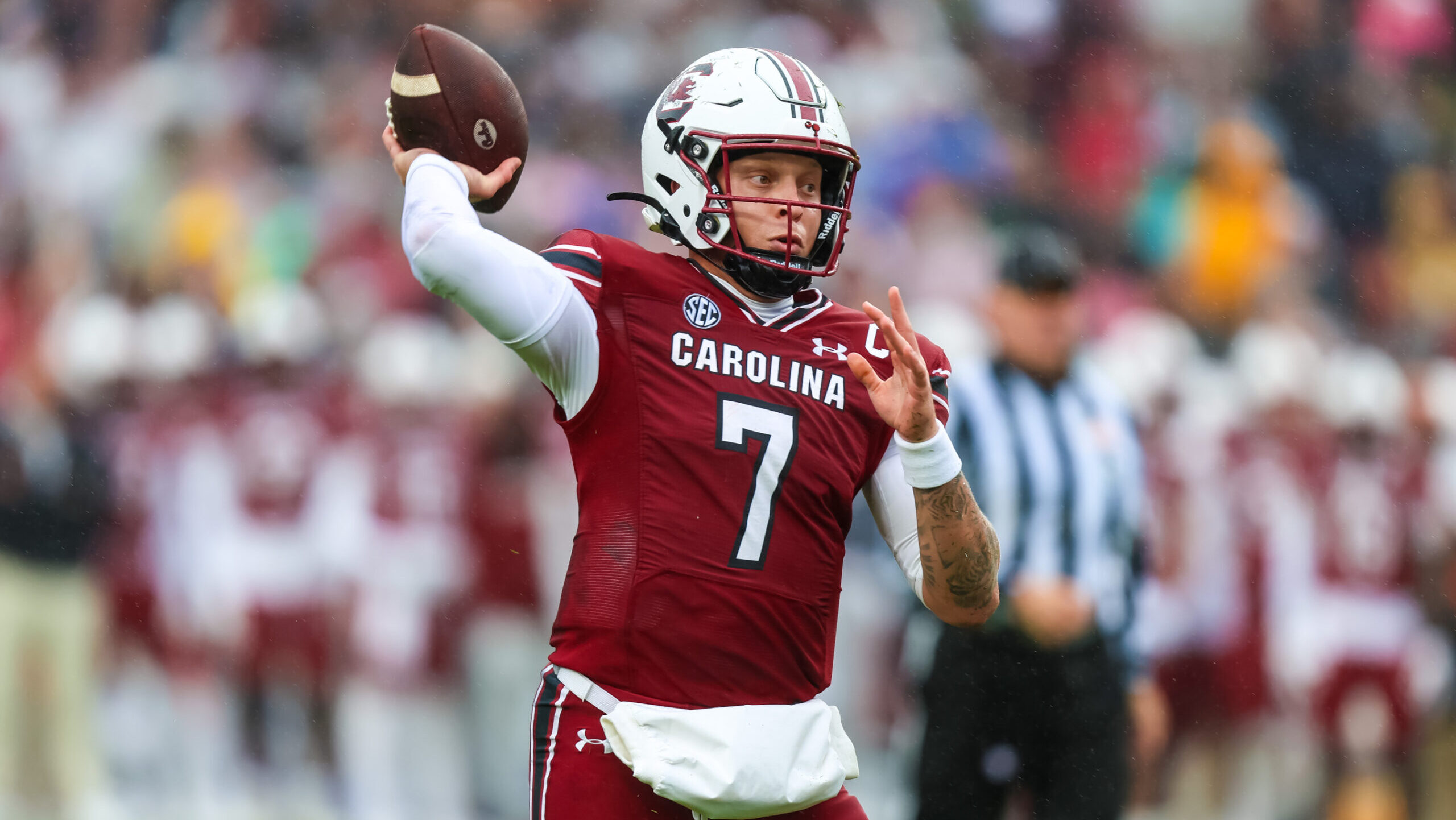Analysis
8/11/21
13 min read
Why Have the Patriots Struggled to Draft a Big-Time Receiver?
This offseason was an uncharacteristic one for the New England Patriots as it saw them spend the most money they ever have in free agency with a plethora of signings to address positions of need heading into the 2021 season. Many of the Patriots’ big signings were in the receiving corps, where they added tight ends Hunter Henry and Jonnu Smith along with wide receivers Nelson Agholor and Kendrick Bourne. These moves were made in an attempt to improve a passing offense that finished 30th in the league last season.
Last season’s receiving leader was 2019 undrafted free agent Jakobi Meyers, while former first-round pick N’Keal Harry has only shown flashes of the player he once was during his time at Arizona State.
Harry isn’t the first receiver that hasn’t panned out for the Patriots. In fact, the team has been known for missing on early-round wide receivers in the Bill Belichick era, which has become even more evident without Tom Brady in the picture. Since Belichick took over as the head coach and general manager for the Patriots in 2000, he has selected 18 wide receivers -- including seven selected in the first three rounds. Why have the majority of these early-round receivers not panned out for the Patriots? Let’s go back through the years and look at these individual decisions to see if any patterns emerge.
2003: Bethel Johnson (Round 2, Pick 45)
Primary Reason for Drafting: Explosiveness
At the beginning of the Belichick era in New England, the Patriots offense lacked a receiver that could take the top off a defense. In fact, during the Patriots’ Super Bowl run in 2001-02, the Patriots’ top-two receivers in yards per touch were David Patten and Terry Glenn, both of whom had 14.6 yards per touch that season. These two receivers were mainly known for their ability in short-to-intermediate routes, but they were not players who were going to torch opposing defensive backs. In two out of the four years Johnson played at Texas A&M, he averaged 18.5 Y/R for the Aggies. Johnson was also a solid kick and punt returner in college, with career averages of 20.0 yards per kick return and 13.0 yards per punt return. Coming off a year that saw the Patriots miss the playoffs, they needed somebody who could help them take their offense to the next level by being able to be used in a plethora of ways.
Unfortunately for New England, the drafting of Bethel Johnson left the Patriots without the services of a receiver who ended up having an almost-Hall-of-Fame career, Anquan Boldin. The former Arizona Cardinal went nine picks after Johnson; he was most likely passed over because he was not seen as an explosive player due to his height and weight (6-1, 216 pounds). Moreover, with Boldin running a 4.72 40-yard dash and Johnson running a 4.38 40 at the combine, it certainly looked like Johnson was going to be the more explosive prospect at the next level. Johnson also had a 38.5-inch vertical compared to only 33.5 for Boldin. In order to become a more explosive offense, Johnson seemed to fit this bill better than Boldin did at the time.
2006: Chad Jackson (Round 2, Pick 36)
Primary Reason for Drafting: Deep Threat Ability
The 2006 NFL Draft was not a particularly strong draft for receivers. Santonio Holmes ended up being the only wide receiver drafted in the first round. With the 36th selection, the Patriots decided to take Chad Jackson from Florida, who many people believed to be the best receiver in the class due to his electric speed—Jackson ran a 4.32 40-yard dash at the 2006 NFL Combine—along with his production in college. During his junior season, Jackson tied the record for most receptions in a single season for Florida with 88 and was named an honorable mention All-American and first-team all-SEC. Also, Jackson had averaged as high as 22.3 yards per reception, so it was clear that he would be able to help the Patriots take the tops off defenses, especially with the Patriots needing to get more depth and talent at the position. Deion Branch was having issues with his contract, Troy Brown was getting older and David Patten was no longer with the team.
By drafting Jackson, the Patriots did pass on Greg Jennings, who was selected with the 52nd pick in that draft. While many people may point to the fact that Jennings had played his collegiate career at Western Michigan as the reason for him being taken so late, Jennings’ production was incredible no matter what school he was at; however, with more exposure and Jennings not being looked at as a pure deep threat (Jennings averaged 14.9 Y/R in college and could do more than just deep routes), the Patriots went with the former Gator in Jackson, who had already proven his elite speed against some of the best defenses in the country.
2009: Brandon Tate (Round 3, Pick 83)
Primary Reason for Drafting: Versatility
The 2009 NFL season marked the return of Tom Brady after he tore his ACL in the opening game of the 2008 season. While the Patriots lost a plethora of impact players on the defensive side of the ball, the offense remained the same for the most part as the prior season. One of the new additions to their offense was do-it-all wide receiver Brandon Tate out of North Carolina. Not only was Tate a receiver, but he was also a return specialist and was used in rushing plays during his time at Chapel Hill. Tate was also a defensive back in high school. This player had a ton of versatility to bring to the table. While Tate wasn’t the most refined receiver in the world, he more than made up for it with his play as a returner during his college career. In fact, Tate was one of only nine players to have a kick return and punt return touchdown in the same game along with being the NCAA career leader in combined kick return yardage. With Troy Brown having been retired for over a year, it was clear the Patriots wanted somebody who could step into his role.
Despite the fact that the 2009 draft class wasn’t the deepest at receiver, the Patriots still managed to pass on Mike Wallace, selected by the Steelers with the very next pick. However, Wallace’s skill set wasn’t necessarily one the Patriots needed. After all, the Patriots still had both Randy Moss and Wes Welker, and Tate offered more of what the Patriots were looking for with his rushing ability along with his impact on special teams. Belichick probably figured he could develop Tate under two of the best receivers that decade until Tate was ready to contribute regularly in the Troy Brown role while also ensuring he could help out Brady and company with better field position.
2010: Taylor Price (Round 3, Pick 90)
Primary Reason for Drafting: Deep Threat Ability
In 2010, for the second year in a row, the Patriots decided to draft a wide receiver in the third round. This time, the Patriots selected speedy wideout Taylor Price from Ohio. Although Price only averaged 13.6 yards per reception during his collegiate career, he was still drafted with the expectation that he would be able to add another weapon to the Patriots’ passing game and expand on their deep passing attack. With both Moss and Welker still in the fold, the Patriots still could have used another receiver to help take the tops off opposing defenses. Price was the pick with his 4.4-second 40-yard dash at the 2010 Combine along with his 37-inch vertical. For a 6-0, 204-pound receiver, Price was able to make all sorts of athletic plays and use his speed incredibly well for his size. Many people touted this pick as an excellent one for the end of the third round.
Although there weren’t many impact receivers left in the 2010 draft, there were still some receivers who had solid careers that came out of the 2010 class. For instance, Mike Williams from Syracuse was a player who ended up finishing second in Offensive Rookie of the Year voting for the 2010 season. There were question marks surrounding Williams, however, regarding his off-field conduct. He had missed an entire season at Syracuse for academic reasons, and he quit football altogether seven games into the following season (2009). With Williams’ commitment to the game in question, Price seemed like a better pick, not only because you knew what you were going to get from the former Ohio receiver, but you also knew he would not quit on your team when things got tough. With expectations the way they are in New England, one cannot afford to let hard times get to them if they want to have a successful career there.
2013: Aaron Dobson (Round 2, Pick 59)
Primary Reason for Drafting: Route Running
With Welker leaving the Patriots in free agency for the Denver Broncos, New England was tasked with revamping their wide receiver corps. Julian Edelman was not yet the player we came to know, and even with the signing of Danny Amendola, the Patriots still needed a taller receiver who could make tough catches. In the 2013 NFL Draft, the Patriots decided to select a Marshall receiver in Aaron Dobson, who was known for his ability to get open in the short-to-intermediate passing game. Many scouts emphasized that Dobson was a player who ran clean routes while also being able to work the sideline very well. He was seen as a very polished receiver coming out of college. Despite not having breakaway speed to beat teams deep, Dobson did prove at the combine that he was fast with a 4.37 40-yard dash, even if it didn’t show up on tape. During this era, the Patriots moved towards a more West Coast style of play built by the Patriots’ array of tight ends and shifty receivers. Dobson was expected to be a player who could excel in that style of play.
A similar type of receiver went in the third round of this draft: Keenan Allen. While Allen was also a receiver who was tremendous in the short-to-intermediate passing game, many people feared his injury history would prevent him from reaching his full potential, while his amount of dropped balls at Cal would make him a liability when an offense needed to get something going. Dobson, on the other hand, was listed as not even recording a drop during his senior season at Marshall. Ultimately, Allen’s injury history made him an extremely difficult player to draft that high, leading to Dobson being the pick for the Patriots and many other teams passing on Allen as a result.
2019: N’Keal Harry (Round 1, Pick 32)
Primary Reason for Drafting: Contested Catch Ability
Coming out of college, N’Keal Harry was mainly known as a contested catch receiver with some after the catch ability -- Arizona State ran a number of screen passes for Harry that he was able to get huge chunks of yardage on, showcasing some explosiveness. In fact, according to Pro Football Focus, Harry compiled 17 contested catches and caught 53.2% of contested targets during his final season at ASU (this was second in the 2019 draft class to Gary Jennings of West Virginia with 54%). While Harry and D.K. Metcalf benched the same amount of reps at the combine (27), a neck injury to Metcalf along with a route tree that mainly consisted of go routes was most likely the difference between taking Harry, a player who only missed one game in his entire collegiate career, and Matcalf, who would go on to be a star in Seattle.
Looking at the comparison between Harry and Titans star wideout A.J. Brown, there aren’t many blatant reasons why the Patriots would pass over the former Ole Miss receiver. One line of thinking is that Belichick felt he already had players like Brown on the roster and wanted somebody who could help to fill the void that would be opening due to tight end Rob Gronkowski’s surprise retirement. With Harry being such a dominant force as a contested catch receiver in the Pac-12, it would not be surprising to think the Patriots thought this would help to keep a lot of the same plays the Patriots would run for Gronkowski while also being able to take some of the pressure off receiver Julian Edelman. With Harry’s inability to get open and his speed being hampered by an ankle injury, Harry became a receiver who relied almost entirely on contested catches while A.J. Brown became an all-around wide receiver that offensive coordinators could do a lot more with due to his skill set.
Conclusion
As is the case with many studies, there are many different factors that could go into why these receivers didn’t work out for the Patriots. In the case of Chad Jackson, he was supposed to be a top receiver in a weaker wide receiver draft class, but he could never stay healthy; however, it can be pointed out that the Patriots have not been ones to take huge risks on the receivers they have drafted. The majority of these players have been ones with low upside and high floors who fit well to what the Patriots wanted to do on offense at the time. In the cases of Aaron Dobson and Taylor Price, there were other players with higher upsides available, but the Patriots instead took receivers they thought they knew exactly what they were going to get. They fit a need, and it was worth it to know what production the Patriots were going to get from them over potentially swinging for a home run and striking out. With Brady at quarterback, the Patriots didn’t necessarily have to take the player with the highest upside because Brady would be able to elevate that player like he had with many others.
This explains why the Patriots haven’t needed to gamble as much when drafting offensive players -- they had such a good quarterback under center, one who had proven many times that he can win big games without the top weapons in the NFL; however, had the Patriots drafted better receivers, they might have won even more. The Patriots could have won the Super Bowl in 2011, when Gronkowski was hobbled with an injury. They could have been better prepared in 2013, when Welker departed in free agency and Gronkowski was injured once again. Lastly, it is most likely the Patriots would have been much better off in the post-Tom Brady era and could have spent their cap space on other positions of need.






